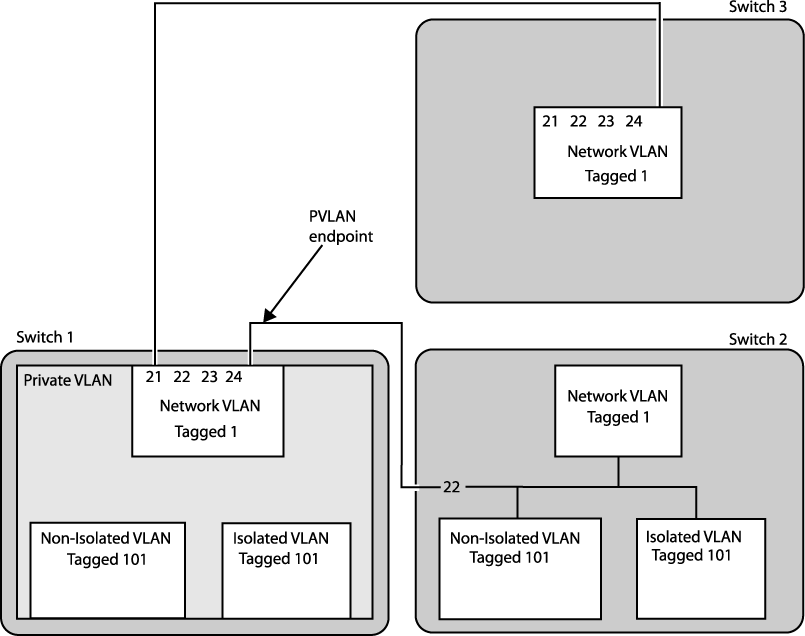A network or subscriber VLAN (Virtual LAN) can be extended to additional switches without a PVLAN configuration on the additional switches.
You might want to do this to connect to existing servers, switches, or other network devices. You probably do not want to use this approach to support clients, as tag translation and VLAN isolation are not supported unless the PVLAN is configured on all PVLAN switches as described in PVLAN Support over Multiple Switches.
Private VLAN Connections to Switches Outside the PVLAN illustrates PVLAN connections to switches outside the PVLAN.

In this configuration, Switch 1, Network VLAN Port 21 connects to a Switch 3 port that only supports the Network VLAN. The Network VLAN Port 21 on Switch 1 is configured as “translated,” which translates subscriber VLAN tags to the network VLAN tag for access to the Network VLAN extension on Switch 3. Switch 3, Port 24 is configured as tagged and only accepts traffic with the Network VLAN Tag. Switch 3 serves as an extension of the Network VLAN and can be used to connect to network devices such as servers or an internet gateway.
Switch 2, port 22 supports the Network, NonIsolated, and Isolated VLANs, but no PVLAN is configured.
Because port 22 supports multiple VLANs that are part of the PVLAN, and because these Switch 2 VLANs are not part of the PVLAN, Switch 1, port 24, must be configured as a PVLAN endpoint, which establishes the PVLAN boundary. Switch 2, port 22, is configured as a regular tagged VLAN port.
For most applications, it would be better to extend the PVLAN to Switch 2 so that the PVLAN features are available to the Switch 2 VLANs.

 Print
this page
Print
this page Email this topic
Email this topic Feedback
Feedback